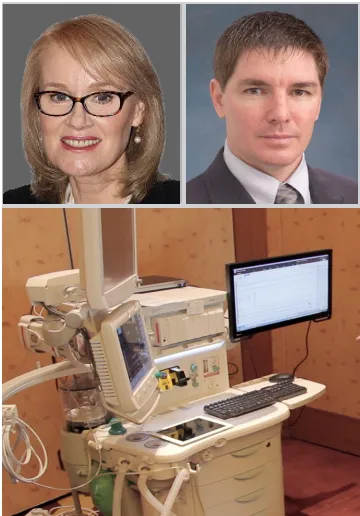
Anesthesia Information Management System accelerates patient care
When patients step into one of the more cutting-edge clinics or hospitals in Singapore or Malaysia, many may notice a marked improvement in care delivery — procedures are completed more quickly and smoothly, and operating staff give more attention to the patient, rather than focusing on paperwork.
Ask the operating staff, and they will likely credit the enhanced service to advanced technology such as their newly adopted anesthesia information management system (AIMS). One example of such a system is GE’s newly launched Centricity Perioperative in Singapore and Malaysia.
Better care, big savings
With an AIMS assisting them, anesthesia providers can automate whole parts of the data monitoring and documentation during the perioperative process. “We need all the data from the blood, from the IV, from the ventilator, from the monitor, and it’s all automatically downloaded into the system. So rather than having to spend time jotting down details, the anesthesia provider can actually spend more time with the patient,” which results in better patient care and better patient outcomes,” says Mitch Silong, vice president and general manager of healthcare IT at GE.
Information is also readily delivered on screens and tracked digitally after the operation in the recovery area, which further cuts down on inefficiency and results in savings, while still upholding higher patient care standards. Silong says that by having a robust information system in place to assist in patient documentation, clinics and hospitals have seen “very big” financial payoffs. Savings are made from more cases starting on time, as anesthesia providers simply look at a monitor and find that all the information needed is already displayed without having to sift through physical records.
“If you’re in an operating procedure and it’s the first case of the day, generally, what you’ll do here is ‘Does anyone see the consent?’ ‘Where is the patient’s record?’” says Silong, but a robust AIMS helps eliminate this paper chase.
Cross-departmental collaboration, chronic care AIMS can be implemented in radiology, perinatal and even ambulatory EMR departments to also boost the efficiency of each of these departments. And when patient information has to be shared across departments and other distribution channels, the system also reliably sends data to and from departments. This results in the whole enterprise becoming a more collaborative and efficient environment as staff can access more information faster, obtain better visualisation, and provide better clinical diagnostics to physicians and healthcare practitioners. Silong claims AIMS allows hospitals to provide better chronic care.
The big data and analytics captured by the system reduces the daunting task of tracking whether chronic care patients are taking their treatments and medicines, and can develop a more predictive and customised delivery of chronic care.



















 Advertise
Advertise






